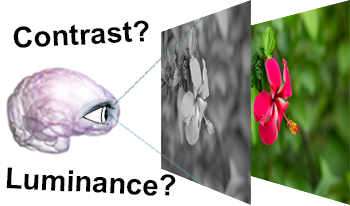
Grayscale images are essential in image processing and computer vision tasks. They effectively emphasize luminance and contrast, highlighting important visual features, while also being easily compatible with other algorithms. Moreover, their simplified representation makes them efficient for storage and transmission purposes. While preserving contrast is important for maintaining visual quality, other factors such as preserving information relevant to the specific application or task at hand may be more critical for achieving optimal performance. To evaluate and compare different decolorization algorithms, we designed a psychological experiment. During the experiment, participants were instructed to imagine color images in a hypothetical ”colorless world” and select the grayscale image that best resembled their mental visualization. We conducted a comparison between two types of algorithms: (i) perceptual-based simple color space conversion algorithms, and (ii) spatial contrast-based algorithms, including iteration-based methods. Our experimental findings indicate that CIELAB exhibited superior performance on average, providing further evidence for the effectiveness of perception-based decolorization algorithms. On the other hand, the spatial contrast-based algorithms showed relatively poorer performance, possibly due to factors such as DC-offset and artificial contrast generation. However, these algorithms demonstrated shorter selection times. Notably, no single algorithm consistently outperformed the others across all test images. In this paper, we will delve into a comprehensive discussion on the significance of contrast and luminance in color-to-grayscale mapping based on our experimental results and analysis.
Prasoon Ambalathankandy, Yafei Ou, Sae Kaneko, Masayuki Ikebe, "A Psychological Study: Importance of Contrast and Luminance in Color to Grayscale Mapping" in Color and Imaging Conference, 2023, pp 55 - 60, https://doi.org/10.2352/CIC.2023.31.1.11
 Find this author on Google Scholar
Find this author on Google Scholar Find this author on PubMed
Find this author on PubMed